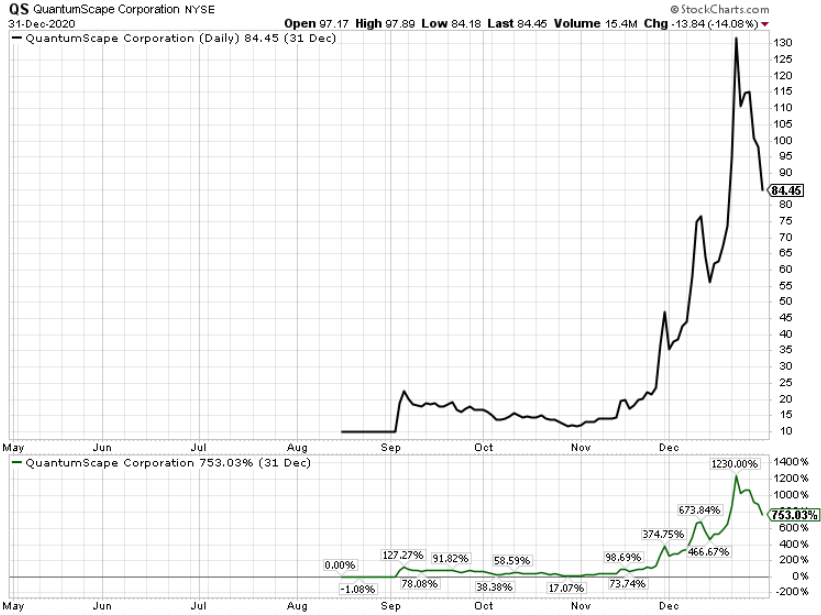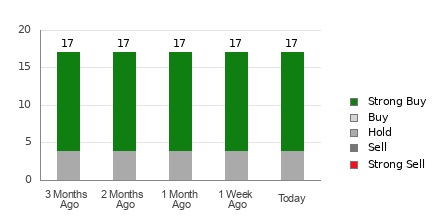One of the easiest ways to get a reading on whether the market is overvalued is to look at the price-to-earnings (P/E) ratio of the S&P 500. With a P/E of 27, the index looks expensive compared to historic levels.
But the market is forward looking and cares more about where companies are going than where they have been. Let’s dive into some encouraging market data that indicates the S&P 500 might not be as expensive as it looks at first glance.

Image source: Getty Images.
The data
New findings from business data firm FactSet Research Systems show that 80% of S&P 500 companies have reported earnings. For the quarter, the growth rate for the S&P 500 is 5%, the highest level since Q2 2022. Earnings growth has been incredibly strong — so strong, in fact, that the forward P/E of the S&P 500 is now 19.9.
According to FactSet, that level is still above the five-year average of 19.1 and the 10-year average of 17.8, but it is lower than levels seen at the end of the first quarter of the calendar year on March 31.
According to Luxembourg-based ISABELNET, a firm that has been doing private research on the U.S. stock market since 1998, consensus analyst estimates for the S&P 500 are $242 for 2024 earnings and $278 for 2025. At a level around 5,200, that would give the S&P 500 a P/E of 21.5 based on the 2024 forecast and 18.7 based on 2025 estimates.
Here’s a look at how the forward P/E has performed over the last five years and how it is expected to fall to around 20 by Q2 2025.

S&P 500 P/E Ratio Forward Estimate data by YCharts.
In sum, growth is strong, earnings are delivering, and the S&P 500 is at a reasonable valuation.
Faster growth justifies a higher multiple
The composition of the S&P 500 is currently more growth oriented than in the past.
The SPDR S&P 500 ETF Trust, which mirrors the performance of the S&P 500, has 30% of its weighting in the “Magnificent Seven,” a term for seven top tech-focused companies that includes Microsoft (NASDAQ: MSFT), Apple (NASDAQ: AAPL), Nvidia (NASDAQ: NVDA), Alphabet, Amazon, Meta Platforms, and Tesla. Nvidia alone now makes up more than 5% of the S&P 500.
The shift toward growth and tech has led to dramatic changes in the S&P 500 and fueled strong gains in the index led by megacap growth stocks. Growth stocks tend to fetch a premium valuation relative to their trailing earnings because investors are willing to pay up for the prospect of future earnings.
With more and more of the S&P 500 allocated to growth stocks, it stands to reason its valuation should be higher than historic levels. By the same token, if the most valuable companies were instead safe, stodgy dividend-paying behemoths, we would expect the S&P 500’s multiple to be lower than prior levels.
To see how growth can make an expensive stock look more affordable, let’s look at the forward earnings estimates of the Magnificent Seven.

MSFT PE Ratio (Forward) data by YCharts.
Notice that Alphabet and Meta Platforms have roughly the same forward P/E as the S&P 500 despite being high-quality cash cows with above-average growth prospects and impeccable balance sheets.
Even Nvidia, which embodies artificial intelligence-fueled market euphoria, has a 35.9 forward P/E — which is less than half of its current 75.9 P/E ratio — because consensus analyst estimates expect Nvidia’s earnings to double over the next year.
Focus on fundamentals
The stock market can do just about anything in the short term. But over the long term, it’s all about how much money companies are making and how much they are expected to make in the future.
If you were to look solely at big tech stock prices or the levels of the S&P 500 and the Nasdaq Composite, you might conclude that this market rally looks overextended. But earnings have delivered and are backing up the rally.
The lesson here is that price doesn’t dictate value. Growth stocks were way oversold at the end of 2022, so there was some initial catching up to do in 2023. But the rally has persisted since then because of earnings growth.
Overall, the stock market looks healthy and is going up for generally the right reasons. But there will always be pockets of speculation and greed.
To filter out the noise, focus on the underlying investment theses of the companies you like: their performance, what’s driving or hindering results, and whether the valuation makes sense. This approach will help ensure you invest in a company for the right reasons and will allow you to stay on an even keel no matter how choppy the market becomes.
Where to invest $1,000 right now
When our analyst team has a stock tip, it can pay to listen. After all, the newsletter they have run for over a decade, Motley Fool Stock Advisor, has nearly tripled the market.*
They just revealed what they believe are the 10 best stocks for investors to buy right now…
See the 10 stocks
*Stock Advisor returns as of May 6, 2024
Suzanne Frey, an executive at Alphabet, is a member of The Motley Fool’s board of directors. John Mackey, former CEO of Whole Foods Market, an Amazon subsidiary, is a member of The Motley Fool’s board of directors. Randi Zuckerberg, a former director of market development and spokeswoman for Facebook and sister to Meta Platforms CEO Mark Zuckerberg, is a member of The Motley Fool’s board of directors. Daniel Foelber has no position in any of the stocks mentioned. The Motley Fool has positions in and recommends Alphabet, Amazon, Apple, FactSet Research Systems, Meta Platforms, Microsoft, Nvidia, and Tesla. The Motley Fool recommends the following options: long January 2026 $395 calls on Microsoft and short January 2026 $405 calls on Microsoft. The Motley Fool has a disclosure policy.
The views and opinions expressed herein are the views and opinions of the author and do not necessarily reflect those of Nasdaq, Inc.









